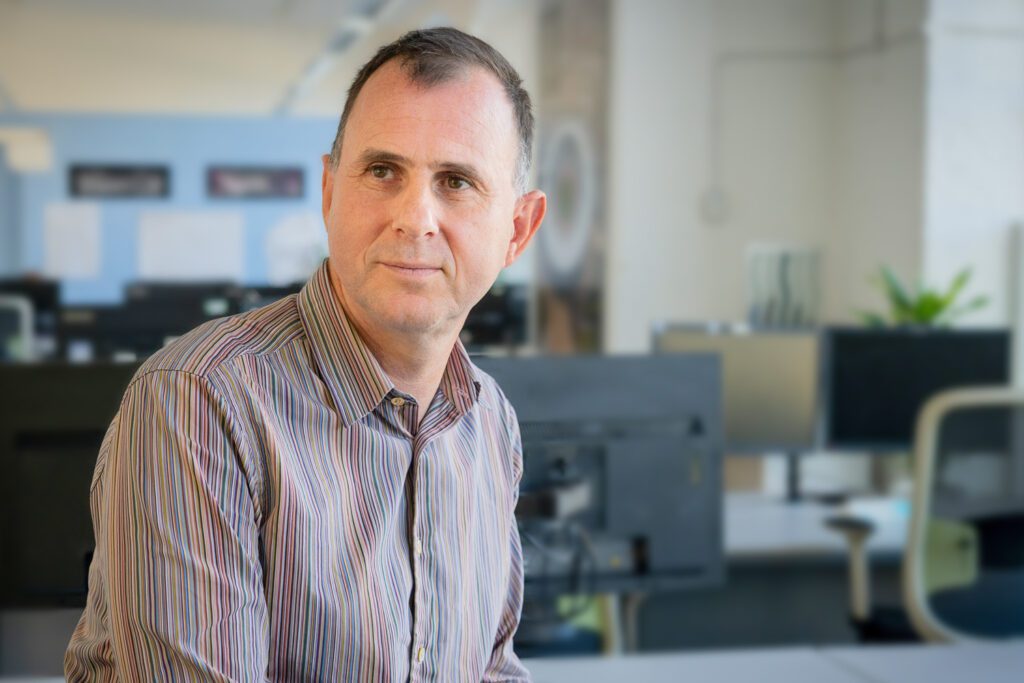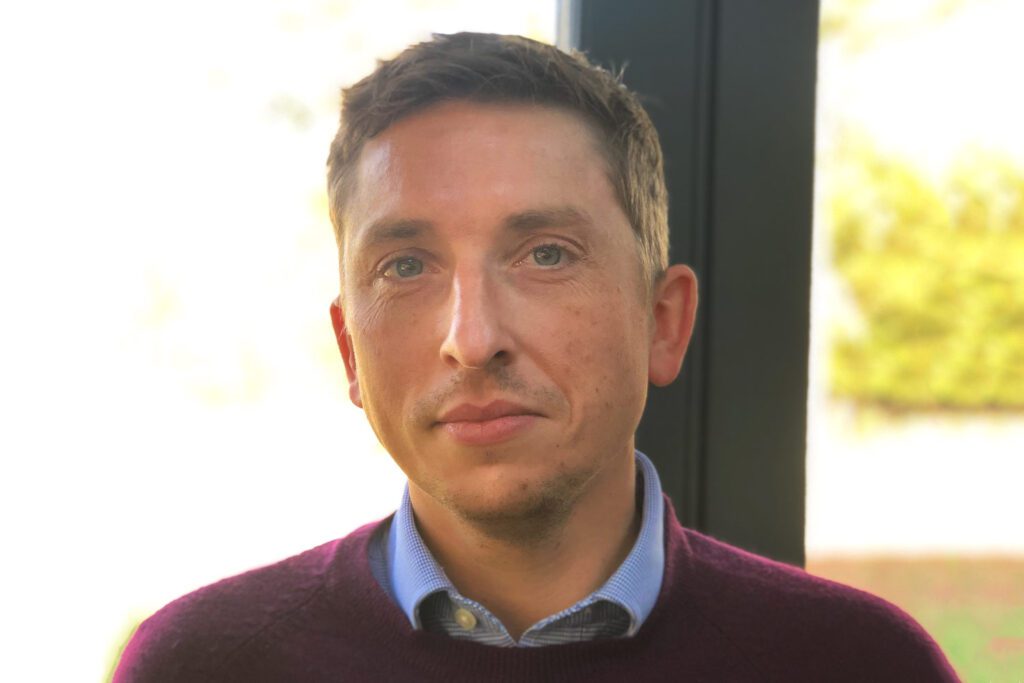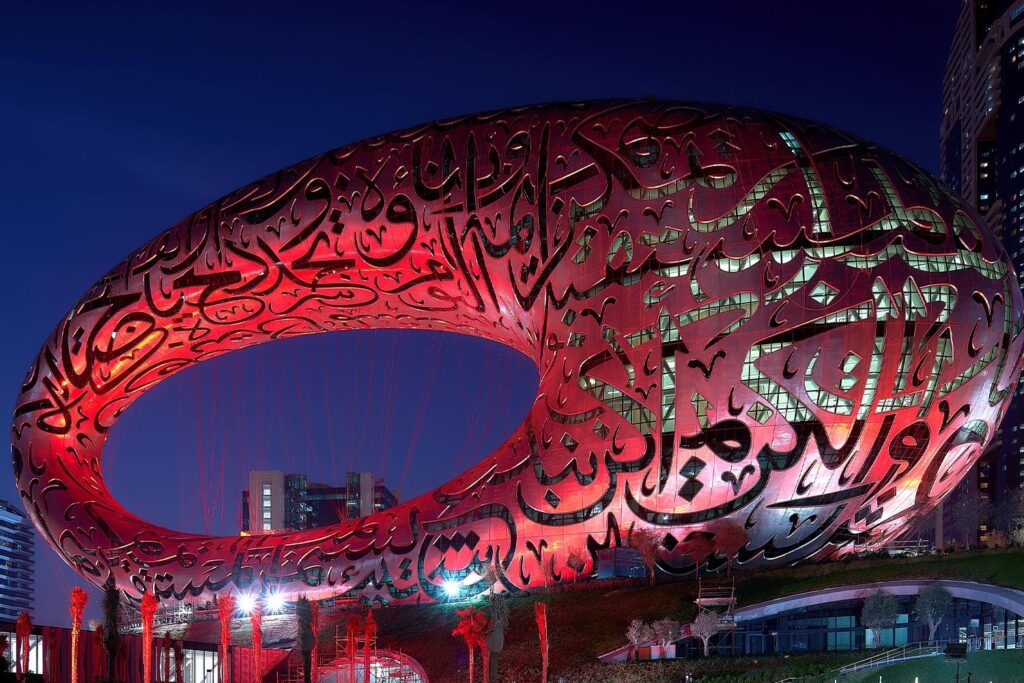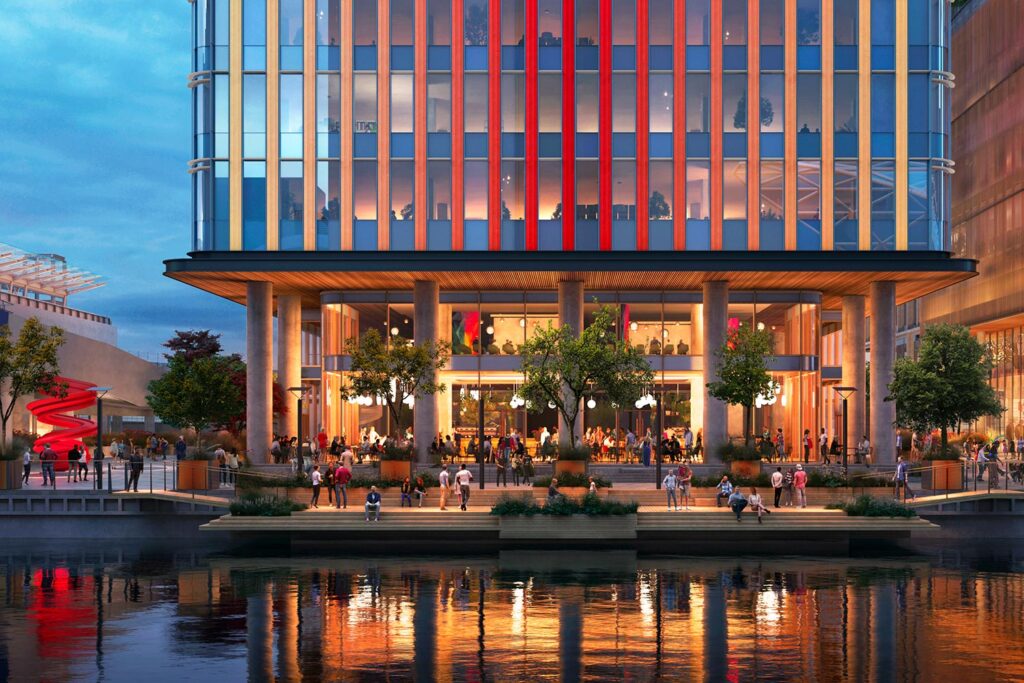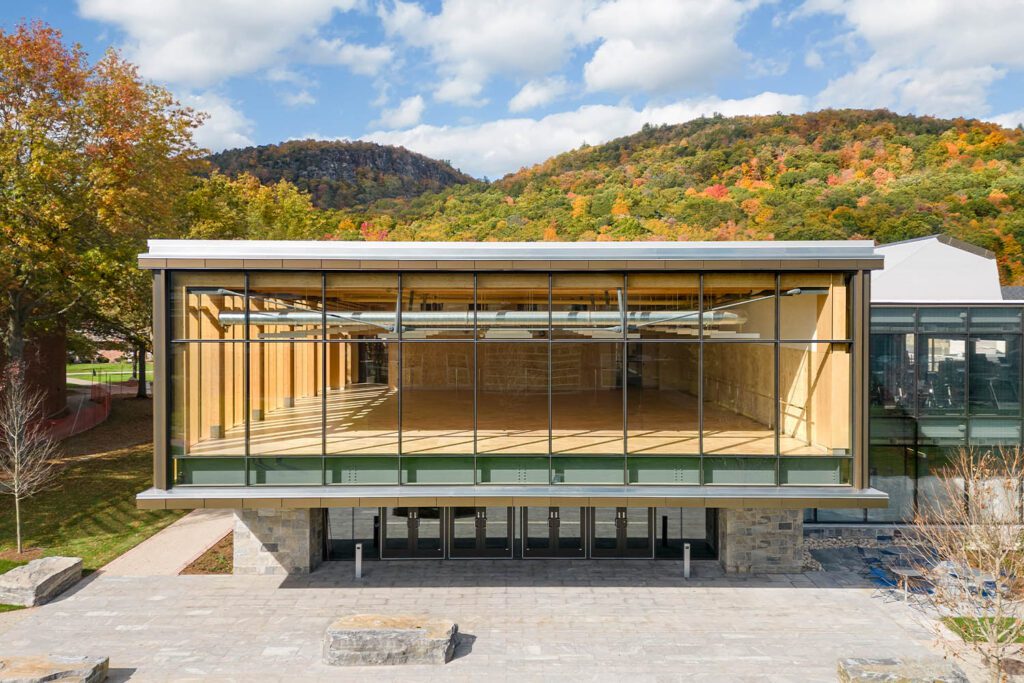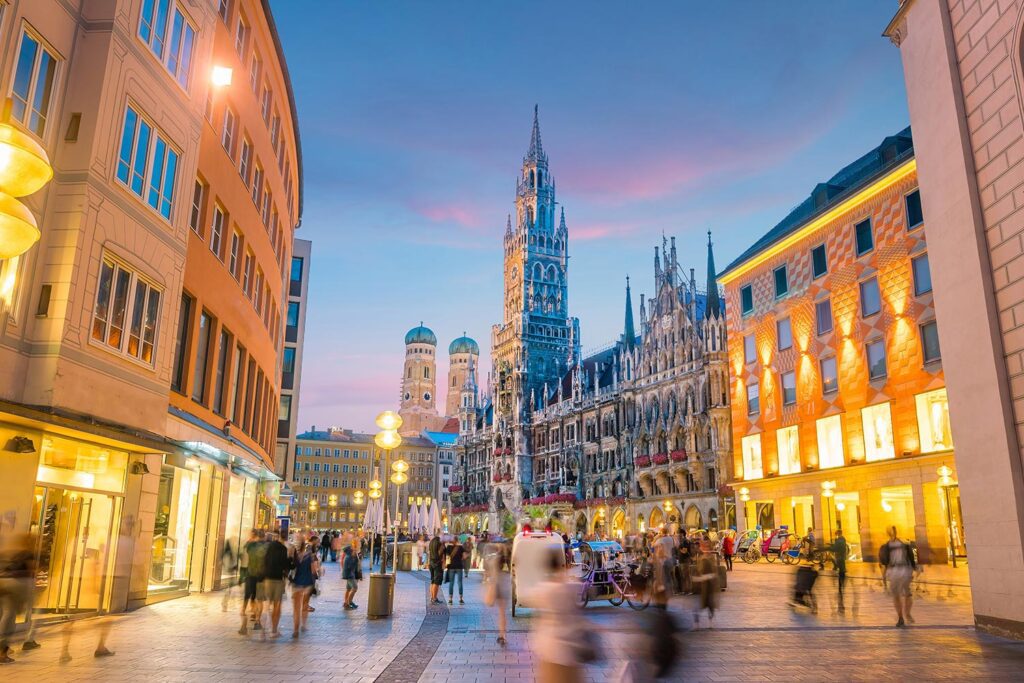In conversation with Alain Waha part II: A look to the future
Previously, we heard about how Alain’s work has allowed us to institutionalise BIM and GIS software across our engineering practice, in order to provide leading services for our clients. In the second part of our Q&A, Alain looks to the future.
As a digital expert and agitator, Alain drives the mobilisation of technology within Buro Happold to augment and improve our design and consultancy services. He champions the technology initiatives that underpin the practice relationships and our project performance, as well as our scalable and resilient business platforms.
What excites you most about the potential for technology in the built environment in the coming years?
The potential is huge, as so far our industry has not deeply absorbed technology into its core processes. I would see three themes for right now:
- shift construction to a production-like, industrial process;
- digital twinning to make assets become autonomous and cognitive;
- the arrival of worker augmentation with an acceleration of our industry towards the knowledge economy.
Looking further ahead, we see the “hybridisation of space” – some call it Phygical; the rise of the Distributed Technologies (DLT) and Metaverse. It is already relevant today as we are creating assets with a lifespan of 50 or 100 years (remember what the world looked like 50 years ago in terms of technology…)
Scaling industrialised construction is key to meeting our ambitions in terms of outcomes around sustainability, societal impact and economic performance. This is happening in pockets, and we see this delivery mechanism growing to more than 25% of the market within the next 10 years. It is a more predictable, more controlled process. The technologies that underpin the scaling are “information management” and “digital supply chains”. It requires starting from a fully resolved design of the intervention you wish to make, then choosing an agile industrial process to deliver it.
It’s the equivalent of robotic surgery in the medical field. Ultimately, an architect or engineer is doing surgery on the built environment – so why can’t their ‘surgery’ also be more predictable, more controlled, more precise? The orchestration of the process is possible thanks to the radical democratisation of technology, which allows it to make things in a controlled, efficient and precise manner.
As our global BIM Lead Michael Bartyzel said in his recent article, design is all about communication. Technology can really support that communication in all sorts of ways.

You began your career in the automotive industry. Can we learn a lot about industrialising construction from that sector?
I spent ten years in the automotive industry. I don’t think you can look at automotive and say that’s the blueprint for construction. But it’s like learning a new language – you understand your own language better when you learn someone else’s.
You can understand the culture, the history and the journey they have made. What we can bring [from automotive] is product-centric thinking and customer-centric thinking. That’s what the product industries have understood well. We can translate that understanding to our world. It’s about creating a conversation between the end-users, the designers and the producers.
Another of the big opportunities we have for technology in the built environment is the growing capacity to gather and interrogate data from built assets. What impact will this have on the sector?
We hear a lot about “Digital Twinning”. Essentially that is the internet revolution of the 2000s now playing out into our industry. It’s all about the ability to connect people, assets and sensors. Once you’ve got the data and the visibility from this, you can make better decisions.
Right now, it’s often hidden. For example, it may be hidden that a window’s performance has been decreased and that is related to the fact that the fuel bill has gone up.
The data is there, but you can’t access it. But with democratisation of access to recorded data and the computational capacity to effectively analyse it through digital twinning, it becomes enormously impactful. It allows us to unlock those gains.
The next logical step in the way buildings respond to data gathering is a greater level of automation. Do you see a time when buildings respond intelligently to their own performance?
Ultimately the built environment is so diverse, can I write a rule that says, for example, ‘when the sun goes behind a cloud, then I can slow down the air conditioning’? Of course, that kind of coding would be possible – it was demonstrated in the 1980s. So far this deterministic approach has been too costly to be of value.
With the radical democratisation of technology in buildings, we now have a technology that watches all the data and says, ‘how do I stabilise the temperature in this room?’ It would say, I have all these inputs, all these things I can change. Can I configure a set of automatic rules without a human having to write each rule? That is Machine Learning. You push the data into the system – maybe a CNN (or convolutional neural network) – and it does its magic. If the data is clean and the human has trained that network, then it can potentially deal with thousands of buildings.
When we talk about AI [artificial intelligence] it all sounds a little bit Star Wars. But Machine Learning can be better understood – it’s about optimising outcomes. It will create a more intelligent building.
Is there a resistance to accepting technological change within the construction industry?
It is difficult to buy into these new ideas, because they are just so novel. But I believe we are experiencing an “iPod moment”. Imagine being in the music industry in 2001 and people are starting to say that music is going to be sold online not in record shops. You’d probably be thinking: “No, everybody wants a CD for their Christmas present. It will never work.” There is a reluctance if you’re told that most of your industry is going to be changed by technology. It is a difficult journey to imagine what our iPod moment might do for our industry, which is much more diverse than the music industry. A degree of resistance to change is inevitable.
As my colleague Jack Treble said, in his recent article, the key enablers for technological transformation in the built environment are the availability of technology at rapidly reducing cost. As costs come down exponentially, technology quickly becomes a pervasive element in designs across the built environment.

Is it important for Buro Happold to be ahead of the curve at this ‘iPod moment’ for the industry?
I wouldn’t want to say we are ahead of the curve, but we are on the curve. We always work with transformative clients, who expect their advisors and experts from Buro Happold to show the way. As new things become part of the art of the possible, we make it possible for our clients, working with them armed with a set of beliefs and a culture of making new things possible.
That’s why people come to work at Buro Happold – to meet colleagues and clients that are open to being truly transformative. We use digital solutions to constantly push forward. Informed by the more than 40 specialist services, our people are not only adopting technological efficiencies but driving the future evolution of technology for our sector.
From colleagues who are designing smart with energy data, to those who are integrating systems with society to create sustainable solutions. From opening conversations on digital twinning, to ensuring that our industry embraces a data-led built environment. At Buro Happold we are a truly interdisciplinary, interconnected community of passionate experts, creating transformative outcomes for our clients.
Buro Happold has been on a clear journey with technology in recent years. Why is this important?
We should absolutely celebrate what the team at Buro Happold has already done, and what they are doing in terms of understanding and integrating the opportunities presented by evolving technologies. Buro Happold is a place where the engineering mind comes to practice and develop interventions for a better-built environment.
These days that includes all those opportunities that are powered by technology – from understanding software to understanding data. Mobilising technology for everyone’s lives in the built environment is one of the key reasons why people join Buro Happold. It’s here where the talent, the client and the built environment meet.
Buro Happold’s culture has always been to be the fast adopters of new ideas and new technologies, it just so happens the whole culture of the world around us has now undergone a true digital transformation at every level of our lives.

